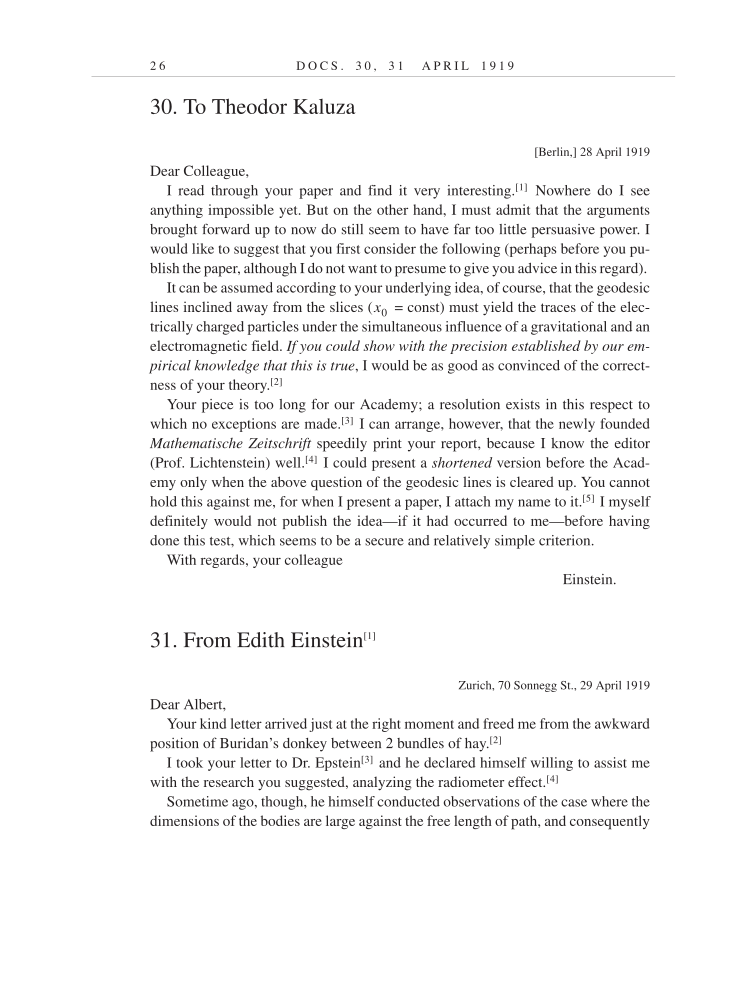2 6 D O C S . 3 0 , 3 1 A P R I L 1 9 1 9 30. To Theodor Kaluza [Berlin,] 28 April 1919 Dear Colleague, I read through your paper and find it very interesting.[1] Nowhere do I see anything impossible yet. But on the other hand, I must admit that the arguments brought forward up to now do still seem to have far too little persuasive power. I would like to suggest that you first consider the following (perhaps before you pu- blish the paper, although I do not want to presume to give you advice in this regard). It can be assumed according to your underlying idea, of course, that the geodesic lines inclined away from the slices ( = const) must yield the traces of the elec- trically charged particles under the simultaneous influence of a gravitational and an electromagnetic field. If you could show with the precision established by our em- pirical knowledge that this is true, I would be as good as convinced of the correct- ness of your theory.[2] Your piece is too long for our Academy a resolution exists in this respect to which no exceptions are made.[3] I can arrange, however, that the newly founded Mathematische Zeitschrift speedily print your report, because I know the editor (Prof. Lichtenstein) well.[4] I could present a shortened version before the Acad- emy only when the above question of the geodesic lines is cleared up. You cannot hold this against me, for when I present a paper, I attach my name to it.[5] I myself definitely would not publish the idea—if it had occurred to me—before having done this test, which seems to be a secure and relatively simple criterion. With regards, your colleague Einstein. 31. From Edith Einstein[1] Zurich, 70 Sonnegg St., 29 April 1919 Dear Albert, Your kind letter arrived just at the right moment and freed me from the awkward position of Buridan’s donkey between 2 bundles of hay.[2] I took your letter to Dr. Epstein[3] and he declared himself willing to assist me with the research you suggested, analyzing the radiometer effect.[4] Sometime ago, though, he himself conducted observations of the case where the dimensions of the bodies are large against the free length of path, and consequently x0
